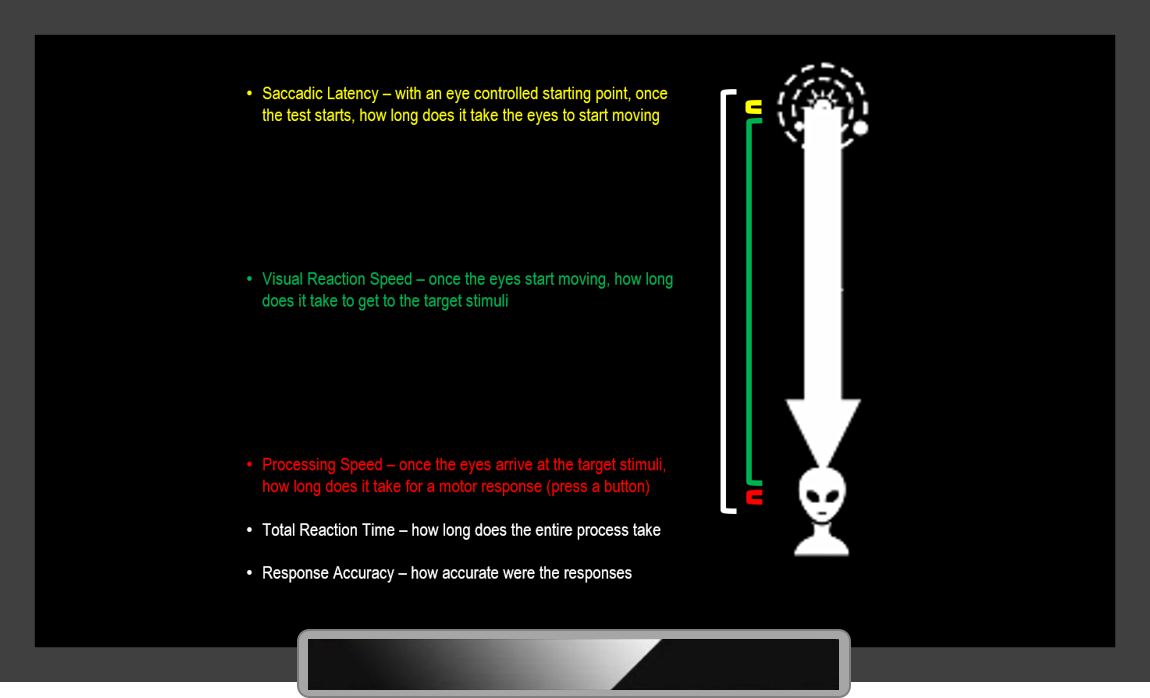About
What is the test? This RightEye tests four primary locations of gaze. The test taker will look at a stimuli, then follow an indicator represented as a line with an arrow tip, to target stimuli.
What is the purpose of the test? This test measures reaction time when there are several stimuli and each corresponds to a specific behavioral response.
Why is this important? Choice reaction time can be divided into visual reaction speed (moving the eyes quickly to the target), processing speed (recognize what is being seen) and motor responses (physical response). Each are important distinguishers in performance, and these critical elements often cannot be examined in traditional tests.
This RightEye test gives the user an advantage in determining specifically where they excel or need further work, making training highly specific and improving results in a short amount of time.
Life Example: An example of everyday use of choice reaction time would be when you approach a traffic light. You decide an appropriate response by (go, slow down, stop) when approaching a traffic light (green, yellow, red).

Metrics

Saccadic Latency (ms): refers to the difference, in milliseconds, between when the stimuli appeared and the eye moved off the target. This test requires the user’s eyes to be on the solar system in order for test to proceed.
Visual Reaction Speed (ms): measures the difference between when the eye leaves the central target (solar system) to when it hits the peripheral target (alien, astronaut or earth). This is then averaged over number of trials.
Processing Speed (ms): measures the difference between when the user’s eyes hit the target (alien, astronaut or earth) and the user presses the button. This is then averaged over number of trials.
Reaction Time (ms): measures difference between when the arrow begins shooting from the solar system and the user presses the button. This is inclusive of both visual reaction speed and processing speed. This is then averaged over number of trials.
Response Accuracy (%): Response Accuracy is the tally of the correct responses, divided by the number of trials and then multiplied by 100.
Distractibility (#): refers to the number of times the users gaze waivers during the test.
Impulsivity (#): refers to the number of times the user responds before a “go” signal (the arrow) is presented.